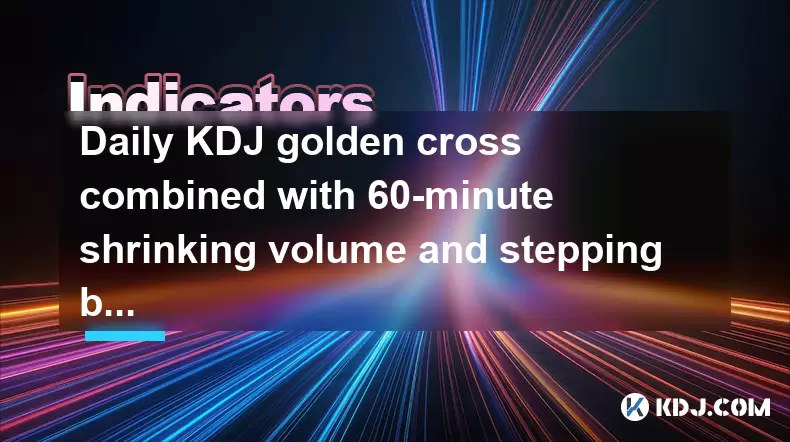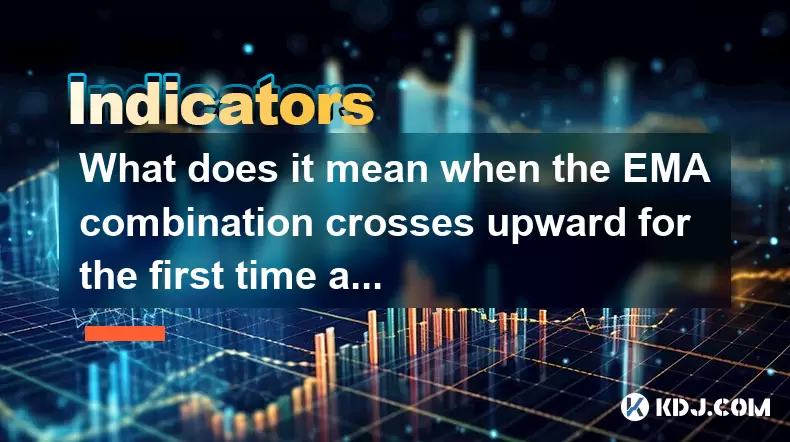-
 Bitcoin
Bitcoin $118600
0.36% -
 Ethereum
Ethereum $3855
1.06% -
 XRP
XRP $3.195
-0.09% -
 Tether USDt
Tether USDt $1.000
-0.04% -
 BNB
BNB $844.5
6.23% -
 Solana
Solana $191.3
2.83% -
 USDC
USDC $0.9997
-0.01% -
 Dogecoin
Dogecoin $0.2376
0.10% -
 TRON
TRON $0.3242
0.83% -
 Cardano
Cardano $0.8222
0.13% -
 Hyperliquid
Hyperliquid $45.26
6.53% -
 Sui
Sui $4.200
-2.56% -
 Stellar
Stellar $0.4336
-1.24% -
 Chainlink
Chainlink $18.86
0.28% -
 Hedera
Hedera $0.2796
-1.75% -
 Bitcoin Cash
Bitcoin Cash $583.3
-1.84% -
 Avalanche
Avalanche $27.06
8.09% -
 Litecoin
Litecoin $112.3
-1.16% -
 Toncoin
Toncoin $3.353
0.58% -
 UNUS SED LEO
UNUS SED LEO $8.968
-0.11% -
 Shiba Inu
Shiba Inu $0.00001395
-0.54% -
 Ethena USDe
Ethena USDe $1.001
-0.03% -
 Uniswap
Uniswap $10.76
0.69% -
 Polkadot
Polkadot $4.175
0.26% -
 Monero
Monero $326.7
1.07% -
 Bitget Token
Bitget Token $4.665
1.61% -
 Dai
Dai $0.9998
-0.02% -
 Pepe
Pepe $0.00001271
0.32% -
 Cronos
Cronos $0.1416
2.01% -
 Aave
Aave $299.3
1.15%
Daily KDJ golden cross combined with 60-minute shrinking volume and stepping back to the 10-unit line to buy point
A daily KDJ golden cross below 20, combined with 60-minute shrinking volume and a 10-EMA bounce, signals a high-probability bullish reversal in crypto trends.
Jul 27, 2025 at 08:43 am

Understanding the Daily KDJ Golden Cross
The KDJ indicator is a momentum oscillator widely used in cryptocurrency technical analysis to identify potential trend reversals. It consists of three lines: K, D, and J. A golden cross occurs when the K line crosses above the D line in the lower region, typically below 20, indicating oversold conditions and a potential bullish reversal. In the context of daily charts, this signal carries significant weight due to the longer time frame, reducing false signals compared to shorter intervals.
When analyzing a daily KDJ golden cross, traders should ensure the crossover happens after a sustained downtrend. This increases the probability of a genuine reversal. The J line, being the most sensitive, often leads the move, followed by the K and D lines. Confirmation of the golden cross should be supported by volume and price action. For instance, if the cross appears while the price is near a key support level or a long-term moving average, the reliability improves.
It's crucial to monitor the position of the K and D lines. A crossover below 20 is considered stronger than one occurring at 50, as it reflects deeper oversold conditions. Traders should also avoid acting on isolated signals. The daily KDJ golden cross must align with other technical factors such as volume patterns and short-term price structure to form a high-probability setup.
Interpreting 60-Minute Shrinking Volume
Volume analysis on the 60-minute chart provides insight into market sentiment during consolidation phases. Shrinking volume—a consistent decrease in trading volume over several candlesticks—suggests diminishing selling pressure. In a downtrend, declining volume indicates that bears are losing momentum, which may precede a reversal if buying interest returns.
When volume contraction appears after a sharp decline, it often signifies exhaustion among sellers. This is particularly meaningful when it coincides with the daily KDJ golden cross. The combination implies that the downward momentum is waning and a shift in control from sellers to buyers could be imminent.
To identify shrinking volume accurately:
- Switch to the 60-minute time frame on your trading platform.
- Enable the volume indicator beneath the price chart.
- Observe at least 6–8 consecutive candles where volume bars are progressively shorter.
- Confirm that price action is forming smaller ranges, indicating consolidation.
This phase of low-volume consolidation is often a precursor to a breakout. If the price begins to rise on increasing volume following this contraction, it validates the resumption of bullish momentum. Traders should watch for this volume expansion as a confirmation signal.
Stepping Back to the 10-Unit Moving Average
After a rebound triggered by the KDJ golden cross and volume contraction, the price may retest a short-term moving average. The 10-unit moving average (usually exponential or simple) on the 60-minute chart acts as dynamic support. A healthy pullback to this level without breaking it significantly enhances the validity of the buy setup.
To apply this step:
- Plot the 10-period EMA on the 60-minute chart.
- After the initial upward move post-KDJ cross, observe whether the price retraces.
- The ideal scenario is a touch or slight bounce off the 10-EMA with minimal penetration.
- Ensure that volume remains low during the pullback, indicating lack of aggressive selling.
This retest of the 10-unit line serves as a confirmation that buyers are still in control. If the price holds above or near the moving average and forms bullish candlestick patterns (e.g., hammer, bullish engulfing), it strengthens the case for entering a long position. The moving average acts as a magnet during recovery phases, and respecting it increases confidence in the trend continuation.
Executing the Buy Entry Strategy
Combining all three conditions creates a high-precision entry strategy. The execution must follow a strict sequence to minimize risk and maximize signal reliability.
- Confirm the daily KDJ golden cross has occurred below level 20.
- Switch to the 60-minute chart and verify that volume has been shrinking over the past 6–8 candles.
- Wait for the price to rebound and then pull back toward the 10-period EMA.
- Enter a long position when the price shows signs of bouncing from the moving average.
- Use a tight stop-loss just below the recent swing low on the 60-minute chart.
- Set a take-profit level based on the nearest resistance zone or use a risk-reward ratio of at least 1:2.
For example, on a BTC/USDT chart, if the daily KDJ lines cross upward at 15, volume on the 60-minute chart has declined for seven candles, and price retraces to the 10-EMA at $60,500 before forming a bullish engulfing candle, that would be the trigger point. Place the buy order at the close of that candle.
Ensure your trading platform supports multi-timeframe analysis and accurate KDJ settings (typically 9,3,3). Misconfigured indicators can lead to false signals.
Risk Management and Confirmation Filters
Even with a confluence of signals, risk cannot be eliminated. Applying filters improves the robustness of the setup.
- Avoid trading during major news events or high volatility periods like exchange outages or regulatory announcements.
- Check that the RSI on the daily chart is not in overbought territory post-recovery to prevent chasing.
- Confirm that the overall market structure on higher time frames (e.g., weekly) is not in a strong downtrend.
- Use on-chain data such as exchange netflow or stablecoin supply ratios as supplementary confirmation.
Position sizing should reflect the confidence level. If all three conditions align perfectly, a larger position may be justified, but never exceed 5% of total capital on a single trade. Use trailing stops once the trade moves in your favor to lock in profits during extended moves.
Frequently Asked Questions
What are the default KDJ settings for this strategy?
The standard KDJ parameters are 9, 3, 3, which means a 9-period stochastic calculation, 3-period smoothing for the K line, and another 3-period moving average for the D line. These settings are optimized for balance between sensitivity and reliability. Adjusting them may lead to premature signals or lag.
How do I confirm shrinking volume on the 60-minute chart?
Open the 60-minute candlestick chart and locate the volume histogram below. Look for at least six consecutive candles where the volume bars are decreasing in height. The price should also show reduced volatility, forming smaller wicks and bodies. Use a volume moving average (e.g., 10-period) to smooth out noise.
Can this strategy be used on altcoins?
Yes, but only on high-liquidity altcoins such as ETH, BNB, or SOL. Low-volume tokens may exhibit erratic volume patterns and false KDJ signals due to manipulation. Always verify that the trading pair has consistent volume and is listed on major exchanges.
What if the price breaks below the 10-period EMA after the golden cross?
A clear break and close below the 10-unit moving average on the 60-minute chart invalidates the setup. This suggests weak buying interest and potential continuation of the downtrend. In such cases, refrain from entering and wait for a new signal.
Disclaimer:info@kdj.com
The information provided is not trading advice. kdj.com does not assume any responsibility for any investments made based on the information provided in this article. Cryptocurrencies are highly volatile and it is highly recommended that you invest with caution after thorough research!
If you believe that the content used on this website infringes your copyright, please contact us immediately (info@kdj.com) and we will delete it promptly.
- RUVI Token's Ripple Rally Potential: Audited AI Crypto Heats Up!
- 2025-07-29 04:50:12
- ADA Price, Cardano, SUI & Remittix: Decoding the Latest Crypto Moves
- 2025-07-29 04:50:12
- Mona Lisa Goes Digital: NFTs, Million-Dollar Dreams, and the Future of Art
- 2025-07-29 04:30:12
- Bitcoin's Balancing Act: ETF Inflows, Average Price, and the $120K Test
- 2025-07-29 04:30:12
- NFTs, Content Coins, and Crypto Investors: Navigating the Digital Frontier
- 2025-07-29 04:55:19
- Truth Social, Bitcoin ETF, Delay: What's the Holdup?
- 2025-07-29 04:55:19
Related knowledge

What does it mean when the EMA combination crosses upward for the first time after sideways trading?
Jul 28,2025 at 03:43pm
Understanding the EMA and Its Role in Technical AnalysisThe Exponential Moving Average (EMA) is a widely used technical indicator in cryptocurrency tr...

What signal does the ROC send when it rises rapidly from a low level and breaks through the zero axis?
Jul 27,2025 at 10:15am
Understanding the Rate of Change (ROC) IndicatorThe Rate of Change (ROC) is a momentum-based oscillator used in technical analysis to measure the perc...

What does it mean when the price breaks through the double bottom neckline and the moving averages are arranged in a bullish pattern?
Jul 28,2025 at 10:57am
Understanding the Double Bottom PatternThe double bottom is a widely recognized reversal chart pattern in technical analysis, particularly within the ...

What signal does the DMA fast line cross the slow line above the zero axis?
Jul 28,2025 at 05:42am
Understanding the DMA Indicator and Its ComponentsThe DMA (Difference of Moving Averages) indicator is a technical analysis tool used in cryptocurrenc...

What does it mean that the rebound is blocked after the moving average is arranged in a short position for the first time?
Jul 26,2025 at 10:51am
Understanding the Short-Term Moving Average ConfigurationWhen traders refer to a 'short position arrangement' in moving averages, they are describing ...

What does it mean that the ZIGZAG low point is raised and the high point breaks through the previous peak?
Jul 28,2025 at 03:28am
Understanding the ZIGZAG Indicator in Cryptocurrency TradingThe ZIGZAG indicator is a technical analysis tool widely used in cryptocurrency trading to...

What does it mean when the EMA combination crosses upward for the first time after sideways trading?
Jul 28,2025 at 03:43pm
Understanding the EMA and Its Role in Technical AnalysisThe Exponential Moving Average (EMA) is a widely used technical indicator in cryptocurrency tr...

What signal does the ROC send when it rises rapidly from a low level and breaks through the zero axis?
Jul 27,2025 at 10:15am
Understanding the Rate of Change (ROC) IndicatorThe Rate of Change (ROC) is a momentum-based oscillator used in technical analysis to measure the perc...

What does it mean when the price breaks through the double bottom neckline and the moving averages are arranged in a bullish pattern?
Jul 28,2025 at 10:57am
Understanding the Double Bottom PatternThe double bottom is a widely recognized reversal chart pattern in technical analysis, particularly within the ...

What signal does the DMA fast line cross the slow line above the zero axis?
Jul 28,2025 at 05:42am
Understanding the DMA Indicator and Its ComponentsThe DMA (Difference of Moving Averages) indicator is a technical analysis tool used in cryptocurrenc...

What does it mean that the rebound is blocked after the moving average is arranged in a short position for the first time?
Jul 26,2025 at 10:51am
Understanding the Short-Term Moving Average ConfigurationWhen traders refer to a 'short position arrangement' in moving averages, they are describing ...

What does it mean that the ZIGZAG low point is raised and the high point breaks through the previous peak?
Jul 28,2025 at 03:28am
Understanding the ZIGZAG Indicator in Cryptocurrency TradingThe ZIGZAG indicator is a technical analysis tool widely used in cryptocurrency trading to...
See all articles

























































































